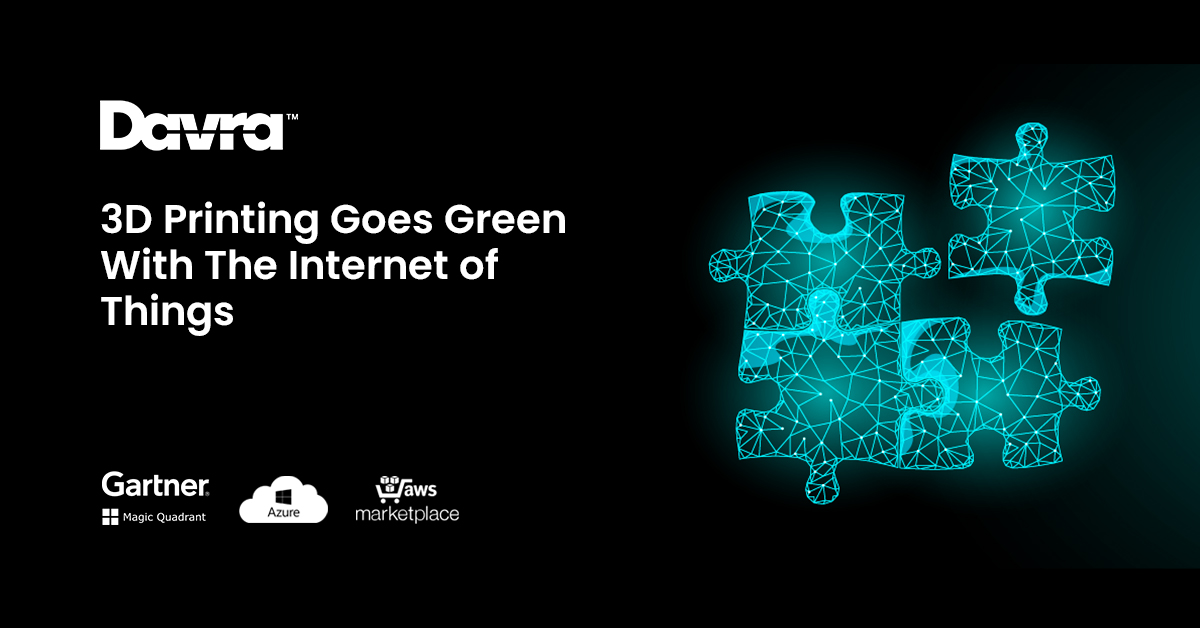IoT in Healthcare Use Cases eBook
Download Your Free IoT in Healthcare Use Cases eBook
Read More


The first IoT device was said to be created at the Carnegie Mellon University, Pennsylvania, by a group of students who connected a Coca Cola machine to the Internet to report its contents. It took a few years, well, more like decades, to embrace IoT. Similarly, in 1983, Chuck Hull invented the first 3D printer. It’s only as of late that we’ve done the research and invested time and resources into such technological pursuits. It makes sense then, that these technologies would overlap down the line. IoT is strongly correlated with the manufacturing industry; robots, factory lines and all manner of machinery can be connected to the internet with sensors and various devices, why should 3D printing be any different?
We’re curious to see what else from the 80s will emerge as the next big thing!
3D printing or additive manufacturing is a process of making three dimensional solid objects from a digital file, using computer aided design (CAD).
The creation of a 3D printed object is achieved using additive processes. In an additive process an object is created by laying down successive layers of material until the object is created. Materials include plastics, composites or bio-materials to create objects that range in shape, size, rigidity and color. Each of these layers can be seen as a thinly sliced cross-section of the object.
3D printing is the opposite of subtractive manufacturing which is cutting out a piece of metal or plastic with a milling machine. 3D printing instead enables you to produce complex shapes using less material than traditional manufacturing methods.
3D printing has well and truly taken off in the world of manufacturing and has even been branded its own term; smart manufacturing. We’ve all seen the effects a pandemic put on manufacturing and logistics in 2020, and it will probably become even busier in the future as greater demands are placed on supply chains.
There is also the much needed added pressure of sustainability and climate action that must be addressed by governments, organisations and citizens alike as waste and plastic production greatly increases.
This is where IoT comes into play. As digital twin technology grows in popularity, with online prototyping allowing for companies to visualise their products before actually creating them. This, coupled with the advantages of rapid and safe 3D printing, will allow organisations to quickly and effectively print their prototypes in-house, saving logistics and production costs, rather than creating in a different locations and having to develop iteratively or even multiple times until they get it right. With smart manufacturing, you can experiment with all of your designs before you actually mass produce them, saving huge amounts of energy and waste.
IoT projects and platforms also cater to the rapid developments because of the efficiencies these platforms bring about, ensuring operations stay afloat due to the maintenance capabilities. In the future, these platforms will also manage and maintain 3D printers, linking them with networks to quickly print designs as they’re fed from customer feedback.
These developments will also clearly expand into the medical devices fields, where quick testing is needed with precision and at much cheaper costs. Up until now, prosthetics have been incredibly expensive to build and were not always built to fit the user. Now with 3D printing, this has transformed the way medical devices can be created alongside the user. Sensors can also be adapted to the prosthetics, enabling smart prosthetics so the user can reap even more benefit from their new way of movement.
What’s more, 3D printing enables conceptual designs to be printed to give an architect, client, or shareholder a complete picture of the end product, minimizing miscommunications about product requirements and designs. All of these benefits, tied in with a connected IoT platform, can give organisations the flexibility and choice to design securely before sending to mass production. Not only is this good for your back pocket, but this is an incredible way to save resources that may otherwise harm the environment. If you’re thinking of investing in a 3D printer today, why not chat with us to see how we can upgrade your operations to smart manufacturing?
Brian McGlynn, Davra, COO
Download Your Free IoT in Healthcare Use Cases eBook

Davra IoT is the only Industrial IoT Platform Available on AWS Marketplace
Read MoreThe Collaboration of Humans & Robots Has Created The Cobot
Read More